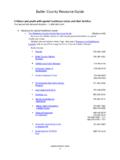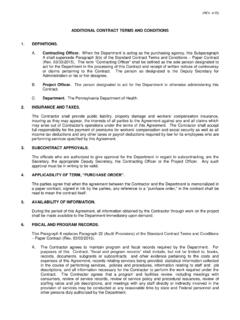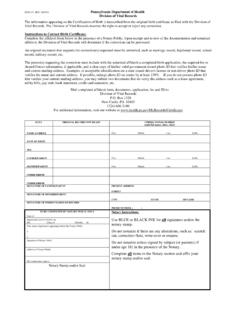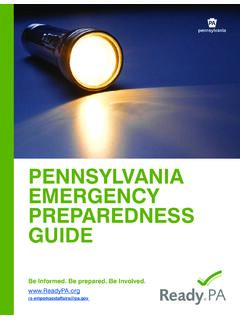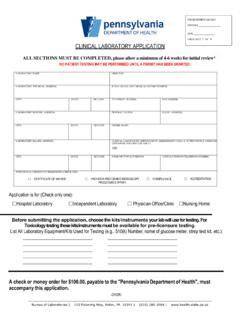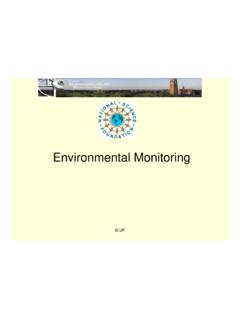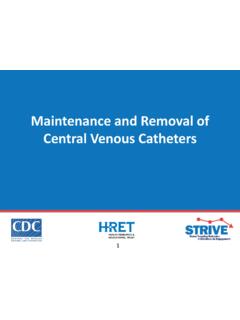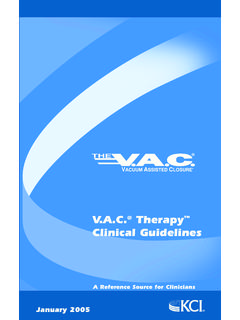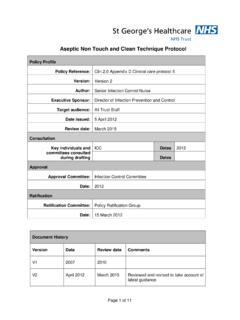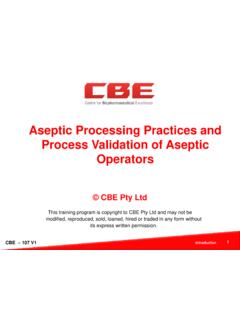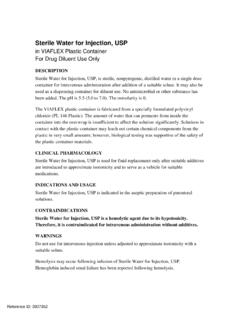Transcription of Wound Care Observation Checklist for Infection Control
1 4/2018 Wound Care Observation Checklist for Infection Control The following represent best practices for Infection Control during Wound dressing changes, assessment and care. To evaluate Wound practices, observe Wound care procedures from start to finish, marking whether practices were appropriate (yes) or not (no) or not observed (n/a). Make notes of all deviations from best practices (areas for improvement). Practices Yes No N/A Notes 1. All supplies gathered before dressing change Supplies were handled in a way to prevent contamination Supplies are dedicated to and labeled for one individual Multi-dose medications are used appropriately1 2.
2 Hand hygiene performed properly before preparing clean field2 3. clean field prepared Surface cleaned with antiseptic wipes following manufacturer guidelines Surface barrier applied ( Chux pad) Supplies placed on surface barrier in aseptic manner 4. Hand hygiene performed properly before starting the procedure 5. clean gloves and PPE donned according to Standard or Contact precautions Consider use of surgical mask for all Wound care 6. Barrier positioned under Wound 7. Old dressing removed and discarded immediately 8. Dirty gloves removed and discarded3 9.
3 Hand hygiene performed properly before accessing clean supplies3 10. clean gloves donned 11. Wound cleaned using aseptic non-touch technique4 12. Wound treatment completed using aseptic non-touch technique4 13. Dirty supplies discarded in trash receptacle 14. Gloves removed and hand hygiene performed properly after dressing change is complete 15. Reusable equipment cleaned and/or disinfected appropriately5 16. Wound cart is clean and utilized appropriately6 4/2018 1. Multi-dose Wound care medications ( ointments, creams) should be dedicated to a single resident whenever possible or a small amount of medication should be aliquoted into a clean container for single-resident use; Medications should be stored properly in a centralized location and never enter a patient treatment area or room.
4 2. Proper hand hygiene is that which occurs at the right time, uses the right method, and uses correct technique and duration. Follow the CDC Guideline for Hand Hygiene in Healthcare Settings available at Some notes to consider: Alcohol-based hand rub (ABHR) is the preferred method of hand hygiene in healthcare settings and should always be used, except: o When hands are visibly soiled; o After known or suspected exposure to Clostridium difficile if your facility is experiencing an outbreak or higher endemic rates; o After known or suspected exposure to patients with infectious diarrhea during norovirus outbreaks; o Before eating; and o After using the restroom.
5 When using ABHR, cover all surfaces of your hands and rub hands until they feel dry When washing your hands with soap and water, rub hands together vigorously for at least 15 seconds covering all hand surfaces. Rinse hands with water, use disposable towels to dry, and turn off the faucet with towel. 3. Gloves should be changed and hand hygiene performed when moving from dirty to clean Wound care activities ( after removal of soiled dressings, before handling clean supplies). Debridement or irrigation should be performed in a way that minimizes cross-contamination of surrounding surfaces from aerosolized irrigation solution.
6 4. aseptic non-touch technique refers to a procedure that aims to prevent the transmission of microorganisms to the Wound . clean gloves should not directly come in contact with the Wound bed. If the Wound requires direct palpation, sterile gloves should be worn. Sterile applicators should be used to apply medications. Dressings should be handled in an aseptic manner so that the dressing surface applied to the Wound is never touched by staff hands or other surfaces. 5. In addition to reusable medical equipment, any surface in the patient/resident s immediate care area contaminated during a dressing change should be cleaned and disinfected.
7 Any visible blood or body fluid should be removed first with a wet, soapy cloth then disinfected with an EPA-registered disinfectant per manufacturer instructions and facility policy. Surfaces/equipment should be visibly saturated with solution and allowed to dry for proper disinfection before reuse. 6. Wound care supply cart should never enter the patient/resident s immediate care area nor be accessed while wearing gloves or without performing hand hygiene first. These are important to preventing cross-contamination of clean supplies and reiterates the importance of collecting all supplies prior to beginning Wound care.
8
